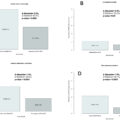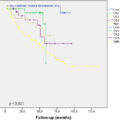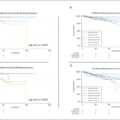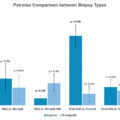Highlights
- •
The proportion of urologists performing major open oncologic cases is declining, while the percentage of all urologists performing minimally invasive oncologic procedures is rising.
- •
Those with oncology specialization and oncology fellowship have significantly higher odds of performing both open and minimally invasive oncologic procedures.
- •
Oncology fellowship training alone was associated with over 2 times greater odds of performing major open oncologic procedures.
Abstract
Introduction
The incidence of urologic cancer is expected to increase as the U.S. population ages, but the size of the urologic workforce is not expected to increase at a commensurate rate. To understand this growing imbalance, we explored the extent to which early career urologists performed oncology cases, particularly open surgical cases, between 2003 and 2019.
Materials and Methods
We examined case logs submitted by early career urologists applying for their oral American Board of Urology Certifying Examination (Part 2) between 2003 and 2019. We included case logs spanning at least 120 days between the first and last record. We used CPT® codes to identify urologists who performed an open radical cystectomy, nephrectomy, or prostatectomy, as well as those who performed a minimally invasive (MIS) radical nephrectomy or prostatectomy. We calculated the annual percentage of urologists who performed each procedure. Multivariable logistic regression analysis analyzed the association between performing each procedure and specialization or fellowship training in oncology, adjusting for gender, practice type, and year of case log submission.
Results
We identified 4,166 unique urologists submitting case logs between 2003 and 2019. Their average age was 34.9 years, 81.3% were male, 14.2% specialized in oncology, and 8.2% reported oncology fellowship training. From 2003 to 2019, the percentage of urologists who performed open oncologic procedures decreased, while the percentage who performed MIS oncologic procedures increased. Fellowship training in oncology significantly increased the odds of performing the following procedures: open radical cystectomy (72.5% with fellowship training vs. 30.0% without fellowship training, OR 2.51, 95% CI 0.63–0.92, P < 0.001), open radical nephrectomy (74.3% with fellowship training vs 42.4% without fellowship training, OR 2.02, 95% CI 1.48–2.78, P < 0.001), open radical prostatectomy (42.1% with fellowship training vs. 26.9% without fellowship training, OR 1.86, 95% CI 1.34–2.58, P < 0.001) and MIS radical prostatectomy (80.4% with fellowship training vs. 45.0% without fellowship training, OR 1.69, 95% CI 1.16–2.48, P = 0.006). When comparing those with solely oncology specialization to those with both oncology specialization and fellowship training, we found that those with oncology fellowship training had over 2 times higher odds of performing open radical cystectomy (OR 2.58, CI 1.78–3.74, P < 0.001), open radical nephrectomy (OR 2.06, CI 1.42–2.99, P < 0.001) and open radical prostatectomy (OR 2.12, CI 1.44–3.12, P < 0.001). Female urologists had significantly lower odds of performing each oncologic procedure.
Conclusions
In this analysis of early career urologist case logs, the proportion of urologists performing a radical cystectomy, radical nephrectomy, and open prostatectomy declined between 2003 and 2019. Oncology specialization or fellowship training, however, significantly increased the odds of performing the procedures. Specifically, oncology fellowship alone was associated with over 2 times the odds of performing major open oncologic procedures. These findings reflect ongoing specialization among early career urologists, such that an oncology fellowship or practice focus has likely become necessary for access to open urologic procedures and to become a high-volume urologic oncology surgeon.
1
Introduction
The incidence of urologic cancers is expected to rise as the U.S. population ages [ ]. The number of new prostate cancer diagnoses has grown by 3% each year from 2014 to 2019 [ ], and 1 in 3 cancers diagnosed in males from 2013 to 2017 was a urologic cancer [ ]. While the demand for urologic oncology care is expected to grow over the next thirty years, the urology workforce is experiencing a shortage. [ ] This imbalance may have significant impacts on patient access to care, surgical wait times, and increased burnout, especially among urologists specialized in oncology.
Amid the growing demand for urologic oncology care and worsening urology workforce shortage, the urology workforce has also become increasingly specialized. According to the 2023 American Urological Association (AUA) Census, 42.3% of practicing urologists in the U.S. are fellowship trained, up from 40.3% in 2014. The three most common fellowship areas in 2023 were oncology, robotics, and endourology. Whereas the percentage of oncology fellowship trained urologists was stable between 2014 and 2023 (12.7% to 13.2%), the percentage of robotic and endourology fellowship trained urologists increased (2.6% to 8.3% and 2.4% to 7.2%, respectively) [ ]. As robotic and endourology fellowship training gains more traction among early career urologists, the proportion of urologists who perform major open oncologic surgery may decline.
To better understand the extent of oncology specialization, we examined surgical practice trends, particularly open oncologic cases, among early career urologists seeking board certification.
2
Materials and methods
To become board-certified, urologists complete the oral American Board of Urology (ABU) Certifying Examination (Part 2). A urologist may apply for this examination after 16 months of practice, and they must complete the examination within 6 years of practice. Part of the certification process includes the submission of a case log of every patient visit over a consecutive 6-month period. These submissions include the age, gender, self-reported specialization, fellowship training, and practice type (e.g., academic or private practice) of the urologist.
We examined the case logs submitted by urologists applying for their ABU certification between 2003 and 2019. The data were obtained directly from the American Board of Urology. Current Procedural Terminology (CPT®) codes were used to identify cases for open radical cystectomy (51570, 51575, 51590, 51595), open radical nephrectomy (50220, 50240), minimally invasive (MIS) radical nephrectomy (50543, 50545), open radical prostatectomy (55845), and MIS radical prostatectomy (55866). Given that there is no specific CPT code for MIS radical cystectomy, it was not included in our analysis.
We calculated and visualized the annual percentage of urologists who performed 1 or more of each procedure. We also performed multivariable logistic regression to identify the association between performing each procedure and gender, specialization in oncology, oncology fellowship training, practice type, and year of case log submission. Finally, we performed a similarly specified regression with a combined specialization and fellowship training covariate. That covariate allowed us to compare oncology specialization to oncology fellowship training, and it had 4 levels: (1) not specialized and not fellowship trained, (2) specialized and not fellowship trained, which was the reference group, (3) fellowship trained and not specialized, and (4) specialized and fellowship trained.
Data analysis was performed in SAS, version 9.4, and Stata, version 17. Statistical significance was set at α = 0.05. The University of Chicago Institutional Review Board exempted this study because these data are deidentified.
3
Results
We identified 4,166 unique urologists who submitted case logs between 2003 and 2019 ( Table 1 ). Among these urologists, 774 (18.6%) were female and their average age was 34.9 years (standard deviation: 2.9). The most common specialization was general urology (55.0%), followed by oncology (14.2%) and endourology (9.4%). The percent of urologists specialized in oncology remained stable from 13.5% in 2003 to 14% in 2019. 27.5% of urologists reported fellowship training, of which 29.8% completed it in oncology, 21.5% in endourology, and 17.2% in female pelvic medicine and reconstructive surgery fellowship. From 2003 to 2016 we saw an increase in the percentage of urologists who reported oncology fellowship training (5.3%–12.3%, respectively). Most urologists were in a private (40.5%), academic (19.4%), or hospital employed (10.3%) practice.
| Characteristic | Value |
|---|---|
| Urologists, N | 4166 |
| Gender, N (%) | |
| Female | 774 (18.6) |
| Male | 3388 (81.3) |
| Missing | 4 (0.1) |
| Age, Mean (Standard Deviation) | 34.9 (2.9) |
| Specialty, N (%) | |
| Andrology/Infertility | 180 (4.3) |
| Endourology/Urolithiasis | 392 (9.4) |
| Female | 318 (7.6) |
| General | 2290 (55) |
| Oncology | 590 (14.2) |
| Pediatric | 289 (6.9) |
| Missing | 107 (2.6) |
| Fellowship, N (%) | 1147 (27.5) |
| Andrology/Infertility | 100 (8.7) |
| Cancer Survivorship | 4 (0.4) |
| Endourology | 246 (21.5) |
| Female Pelvic Medicine and Reconstructive Surgery | 197 (17.2) |
| General | 19 (1.7) |
| Health Services Research | 2 (0.2) |
| Oncology | 342 (29.8) |
| Pediatrics | 47 (4.1) |
| Reconstruction | 69 (6) |
| Robotics | 109 (9.5) |
| Transplant | 12 (1.1) |
| Practice Type, N (%) | |
| Academic | 808 (19.4) |
| Hospital Employed | 427 (10.3) |
| Managed Care/Health Maintenance Organizations | 123 (3) |
| Military or Federal Government | 130 (3.1) |
| Private Practice | 1688 (40.5) |
| Other | 14 (0.3) |
| Missing | 976 (23.4) |
| Year of First Case in Practice Log, N (%) | |
| 2003 to 2007 | 1071 (25.7) |
| 2008 to 2011 | 924 (22.2) |
| 2012 to 2015 | 1008 (24.2) |
| 2016 to 2019 | 1163 (27.9) |
Stay updated, free articles. Join our Telegram channel

Full access? Get Clinical Tree







